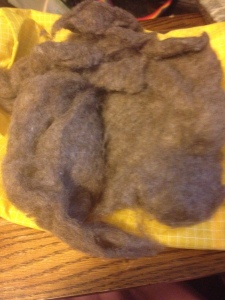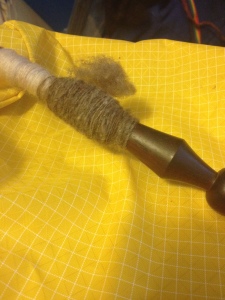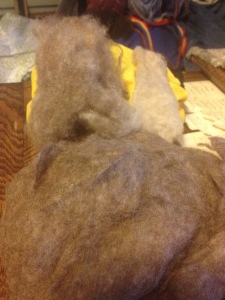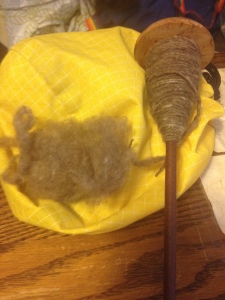I have a set of Viking combs and they are a perfect fit for the type of wool I like to spin. I believe these are from Indigo Hound. The single row works fine for me. It would be nice to have a double row set for finer fiber. I chatted with some comb owners via email before I got my first set of combs. English style combs have less waste, but require a different technique to use. Paddle combs were highly recommended too. I like to spin longer fibered wools like Romney, Icelandic and Corriedale. These can be easily processed with these simple combs. The only other tool I use with this is a horn diz. You can easily make one out of plastic, if you don’t have access to horn.
This project uses three Romney lamb fleeces, soon to be turned into the Darrowby cardigan.
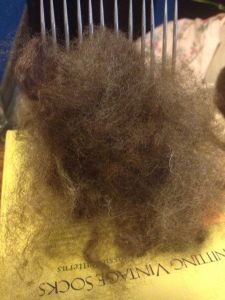
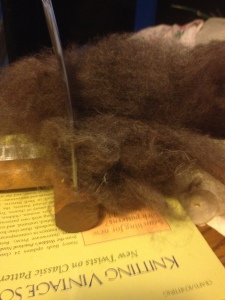
This is the comb loaded. It’s important not to put too much onto the comb. It will fluff up and it’s easier to comb with less fiber. Just take some off if you have too much. The fiber is easier to comb if it’s warm. If you have a problem with static, just spritz it with a bit of water. Use the tip of the comb to go through the ends of the fiber. You can comb with it at a 90 degree angle, but I will sometimes comb a bit from underneath.
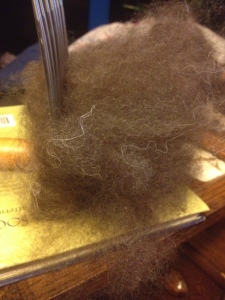
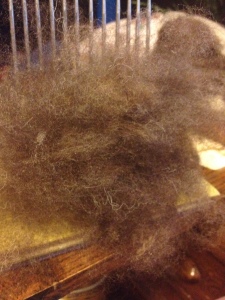
This is after the second pass. You’ll see the fiber really start to straighten and align on this pass.
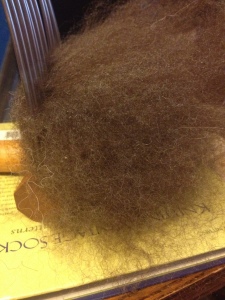
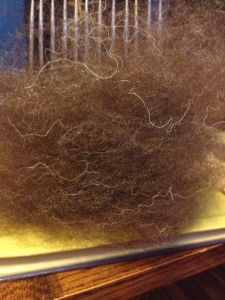
Third pass and this is all I usually need. At this point, it will look nicely combed.It’s time to put on the diz and change it into roving. I smooth the fiber into a “beard” shape, then roll the end up to poke it through the hole of the diz. Once it’s in, I pull the fiber a bit and push the diz down towards the fiber mass. You want it against the fiber, but not tight. Start pulling on the end of the fiber. I generally pull about a hand’s width and stop. Slide the diz down into the fiber mass and pull again. It should slide along pretty easily. I don’t want the roving to get too thin, as I can thin it out after I’m done with this process.
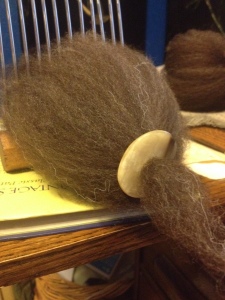
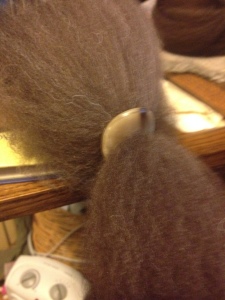
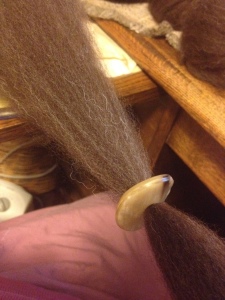
You’ll start to get down to the fiber left at the end. Look to see how much junky stuff is getting into those last fibers. That’s when I just pull the last good fibers through the diz and call it good. If you seem to be pulling to one side, smooth the fibers into that beard shape before you slide the diz back. You should catch some of the fibers from the other side and will start to draw more of them in.
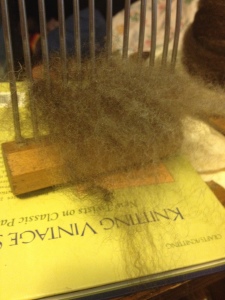
You will have some fiber left over. Sometimes, it’s good fiber that just tangled. I don’t try to reprocess this. With longwools, it should be clean looking roving at this point. And this is a good place to talk about dual coated wool, like Icelandic. The long fibers will pull first, followed by the shorter stuff. If you are careful, you can blend the two fibers to a certain extent. Viking combs were designed for you to be able to separate the long and short fibers and spin them separately.
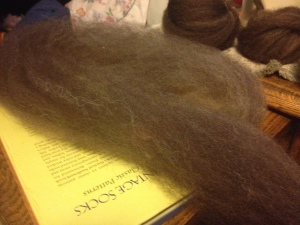
This is what the roving looks like after combing. I like to roll this up into little “nests” for storage. As I wind it around, I pull to even it out a bit and I twist it a little as I wind it. I tuck the end into the circle of roving and it looks like this:
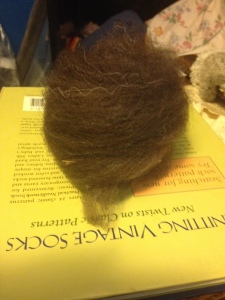
Finished product! I’m spinning this fiber on my Enid Ashcroft Olive Mindi. I’m going for a three ply, worsted weight yarn. The turk will make this low twist, so it won’t be the hard, firm worsted yarn you would see from a wheel or high whorl. I’ll post pictures of the fiber after I’ve plied it. Feel free to drop me a line if any part of this isn’t clear. I do sometimes card fiber, but I really love the process of combing.


